University and related GOOD NEWS
112 CLASSICAL LANGUAGES
Nikhilavijjālaya ca ñātibhūta Pavatti Nissāya
http://sarvajan.ambedkar.org anto 112 Seṭṭhaganthāyatta Bhāsā
Attempting
to propagate Tipitaka to all societies to enable them to attain Eternal
Bliss as Final Goal by taking lessons for their Research and
Fellowship. Present them the teachings in latest Visual Format including
7D/3D Laser Holograms and Circarama Cinema cum Meditation Hall.
Live purely. Be quiet.
Do your work with mastery.
Like the moon, come out
from behind the clouds!
Shine”








from World Religions

Don’t miss out on Wisdom from World Religions, a free online course
Dear Awakened One,
Thank you for signing up for the chance to take Wisdom from World
Religions. I’m excited to invite you on this adventure into the spirit,
and to get you started.
You can log into Wisdom from World Religions with the username and password below:
Portal Website Address: https://wisdomfromworldreligions.com/
Username: Awakened One
I look forward to seeing you at the beginning of the course on June 4th or August 13th! Thank you again.
Warmly,
Professor Ken Rose
STUDY THE WORLD’S SPIRITUAL WISDOM
ABOUT THIS FREE COURSE
Until recently, the wisdom of the world’s religions existed in different
silos, separated by barriers of language and distance. In Wisdom From
World Religions—a 6-week, 100% free online course—celebrated professor
Kenneth Rose (PhD, Harvard) helps you enrich your life with the
religious and spiritual wisdom of the world’s great faith traditions.
Through a generous grant, the Templeton World Charity Foundation will
pay the tuition of the first 2,000 participants.
WHAT YOU’LL LEARN
This course seeks to give clear and inspiring answers to many of life’s big questions:
• What clues do science and the world’s religions give about the meaning and purpose of life?
• Is science the ultimate guide to the deepest truth of life?
• Why do the many world religions offer such different pictures of the meaning of life?
• What practices can bring God, or a divine reality, into your own experience?
• Is death the end of life?
Sign up by August 12 to begin this spiritual journey.
ABOUT THIS FREE COURSE
Until recently, the wisdom of the world’s religions existed in different
silos, separated by barriers of language and distance. In Wisdom From
World Religions—a 6-week, 100% free online course—celebrated professor
Kenneth Rose (PhD, Harvard) helps you enrich your life with the
religious and spiritual wisdom of the world’s great faith traditions.
Through a generous grant, the Templeton World Charity Foundation will
pay the tuition of the first 2,000 participants.
WHAT YOU’LL LEARN
This course seeks to give clear and inspiring answers to many of life’s big questions:
• What clues do science and the world’s religions give about the meaning and purpose of life?
• Is science the ultimate guide to the deepest truth of life?
• Why do the many world religions offer such different pictures of the meaning of life?
• What practices can bring God, or a divine reality, into your own experience?
• Is death the end of life?
Sign up by August 12 to begin this spiritual journey.
Kenneth
Rose is Senior Research Fellow at the Graduate Theological Union
(Berkeley, California). He has a PhD in the Study of Religion from
Harvard University, and he has taught in the areas of comparative
religion, comparative mysticism, religious pluralism, and the philosophy
of meditation at Christopher Newport University, the University of
Virginia, the University of Richmond, and the University of
Massachusetts.
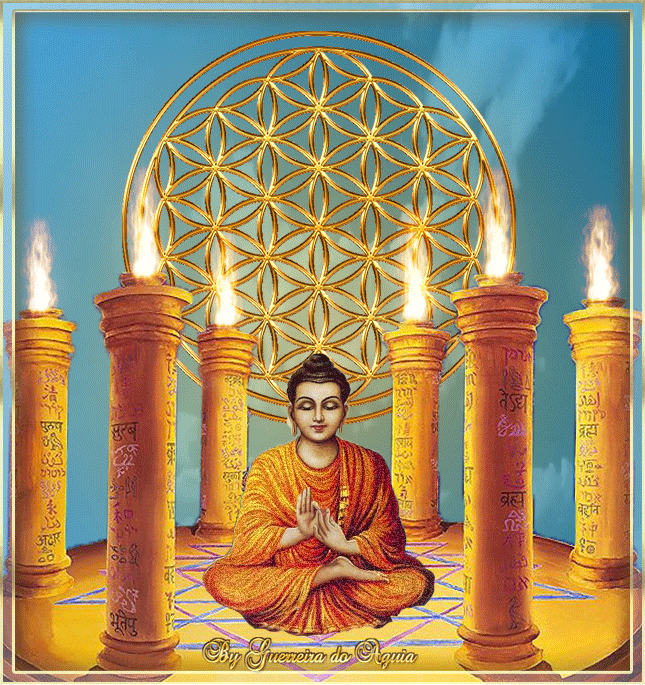




![Quote of the Day: “Meditation is not evasion; it is a serene encounter with reality.” — Thích Nhất Hạnh [6041] 16](https://i.pinimg.com/564x/7c/41/83/7c418326e57ab47c16c29ebb7489112d.jpg)

Mindfulness in Plain English by Bhante Gunaratana
Chapter 3
What Meditation Is
Meditation is a word, and words are used in different ways by
different speakers. This may seem like a trivial point, but it is not.
It is quite important to distinguish exactly what a
particular speaker means by the words he uses. Every culture on
earth, for example, has produced some sort of mental practice which
might be termed meditation. It all depends on how loose a
definition you give to that word. Everybody does it, from Africans
to Eskimos. The techniques are enormously varied, and we will make no
attempt to survey them. There are other books for that.
For the purpose of this volume, we will restrict our discussion to
those practices best known to Western audiences and most likely
associated with the term meditation.
Within the Judeo-Christian tradition we find two overlapping
practices called prayer and contemplation. Prayer is a direct address to
some spiritual entity. Contemplation is a prolonged period
of conscious thought about some specific topic, usually a religious
ideal or scriptural passage. From the standpoint of mental culture, both
of these activities are exercises in concentration.
The normal deluge of conscious thought is restricted, and the mind
is brought to one conscious area of operation. The results are those you
find in any concentrative practice: deep calm, a
physiological slowing of the metabolism and a sense of peace and
well-being.
Out of the Hindu tradition comes Yogic meditation, which is also
purely concentrative. The traditional basic exercises consist of
focusing the mind on a single object: a stone, a candle flame,
a syllable or whatever, and not allowing it to wander. Having
acquired the basic skill, the Yogi proceeds to expand his practice by
taking on more complex objects of meditation: chants, colorful
religious images, energy channels in the body and so forth. Still,
no matter how complex the object of meditation, the meditation itself
remains purely an exercise in concentration.
Within the Buddhist tradition, concentration is also highly
valued. But a new element is added and more highly stressed. That
element is awareness. All Buddhist meditation aims at the
development of awareness, using concentration as a tool. The
Buddhist tradition is very wide, however, and there are several diverse
routes to this goal. Zen meditation uses two separate tacks.
The first is the direct plunge into awareness by sheer force of
will. You sit down and you just sit, meaning that you toss out of your
mind everything except pure awareness of sitting. This
sounds very simple. It is not. A brief trial will demonstrate just
how difficult it really is. The second Zen approach used in the Rinzai
school is that of tricking the mind out of conscious
thought and into pure awareness. This is done by giving the student
an unsolvable riddle which he must solve anyway, and by placing him in a
horrendous training situation. Since he cannot flee
from the pain of the situation, he must flee into a pure experience
of the moment. There is nowhere else to go. Zen is tough. It is
effective for many people, but it is really tough.
Another stratagem, Tantric Buddhism, is nearly the reverse.
Conscious thought, at least the way we usually do it, is the
manifestation of ego, the you that you usually think that you are.
Conscious thought is tightly connected with self-concept. The
self-concept or ego is nothing more than a set of reactions and mental
images which are artificially pasted to the flowing process of
pure awareness. Tantra seeks to obtain pure awareness by destroying
this ego image. This is accomplished by a process of visualization. The
student is given a particular religious image to
meditate upon, for example, one of the deities from the Tantric
pantheon. He does this in so thorough a fashion that he becomes that
entity. He takes off his own identity and puts on another.
This takes a while, as you might imagine, but it works. During the
process, he is able to watch the way that the ego is constructed and put
in place. He comes to recognize the arbitrary nature of
all egos, including his own, and he escapes from bondage to the ego.
He is left in a state where he may have an ego if he so chooses, either
his own or whichever other he might wish, or he can do
without one. Result: pure awareness. Tantra is not exactly a game of
patty cake either.
Vipassana is the oldest of Buddhist meditation practices. The
method comes directly from the Sitipatthana Sutta, a discourse
attributed to Buddha himself. Vipassana is a direct and gradual
cultivation of mindfulness or awareness. It proceeds piece by piece
over a period of years. The student’s attention is carefully directed to
an intense examination of certain aspects of his own
existence. The meditator is trained to notice more and more of his
own flowing life experience. Vipassana is a gentle technique. But it
also is very, very thorough. It is an ancient and codified
system of sensitivity training, a set of exercises dedicated to
becoming more and more receptive to your own life experience. It is
attentive listening, total seeing and careful testing. We learn
to smell acutely, to touch fully and really pay attention to what we
feel. We learn to listen to our own thoughts without being caught up in
them.
The object of Vipassana practice is to learn to pay attention. We
think we are doing this already, but that is an illusion. It comes from
the fact that we are paying so little attention to the
ongoing surge of our own life experiences that we might just as well
be asleep. We are simply not paying enough attention to notice that we
are not paying attention. It is another Catch-22.
Through the process of mindfulness, we slowly become aware of
what we really are down below the ego image. We wake up to what life
really is. It is not just a parade of ups and downs,
lollipops and smacks on the wrist. That is an illusion. Life has a
much deeper texture than that if we bother to look, and if we look in
the right way.
Vipassana is a form of mental training that will teach you to
experience the world in an entirely new way. You will learn for the
first time what is truly happening to you, around you and
within you. It is a process of self discovery, a participatory
investigation in which you observe your own experiences while
participating in them, and as they occur. The practice must be
approached with this attitude.
“Never mind what I have been taught. Forget about theories and
prejudgments and stereotypes. I want to understand the true nature of
life. I want to know what this experience of being alive
really is. I want to apprehend the true and deepest qualities of
life, and I don’t want to just accept somebody else’s explanation. I
want to see it for myself.” If you pursue your meditation
practice with this attitude, you will succeed. You’ll find yourself
observing things objectively, exactly as they are–flowing and changing
from moment to moment. Life then takes on an
unbelievable richness which cannot be described. It has to be
experienced.
The Pali term for Insight meditation is Vipassana Bhavana.
Bhavana comes from the root ‘Bhu’, which means to grow or to become.
Therefore Bhavana means to cultivate, and the word is always
used in reference to the mind. Bhavana means mental cultivation.
‘Vipassana’ is derived from two roots. ‘Passana’ means seeing or
perceiving. ‘Vi’ is a prefix with a complex set of
connotations. The basic meaning is ‘in a special way.’ But there
also is the connotation of both ‘into’ and ‘through’. The whole meaning
of the word is looking into something with clarity and
precision, seeing each component as distinct and separate, and
piercing all the way through so as to perceive the most fundamental
reality of that thing. This process leads to insight into the
basic reality of whatever is being inspected. Put it all together
and ‘Vipassana Bhavana’ means the cultivation of the mind, aimed at
seeing in a special way that leads to insight and to full
understanding.
In Vipassana mediation we cultivate this special way of seeing
life. We train ourselves to see reality exactly as it is, and we call
this special mode of perception ‘mindfulness.’ This process
of mindfulness is really quite different from what we usually do. We
usually do not look into what is really there in front of us. We see
life through a screen of thoughts and concepts, and we
mistake those mental objects for the reality. We get so caught up in
this endless thought stream that reality flows by unnoticed. We spend
our time engrossed in activity, caught up in an eternal
pursuit of pleasure and gratification and an eternal flight from
pain and unpleasantness. We spend all of our energies trying to make
ourselves feel better, trying to bury our fears. We are
endlessly seeking security. Meanwhile, the world of real experience
flows by untouched and untasted. In Vipassana meditation we train
ourselves to ignore the constant impulses to be more
comfortable, and we dive into the reality instead. The ironic thing
is that real peace comes only when you stop chasing it. Another
Catch-22.
When you relax your driving desire for comfort, real fulfillment
arises. When you drop your hectic pursuit of gratification, the real
beauty of life comes out. When you seek to know the
reality without illusion, complete with all its pain and danger,
that is when real freedom and security are yours. This is not some
doctrine we are trying to drill into you. This is an observable
reality, a thing you can and should see for yourself.
Buddhism is 2500 years old, and any thought system of that
vintage has time to develop layers and layers of doctrine and ritual.
Nevertheless, the fundamental attitude of Buddhism is intensely
empirical and anti-authoritarian. Gotama the Buddha was a highly
unorthodox individual and real anti-traditionalist. He did not offer his
teaching as a set of dogmas, but rather as a set of
propositions for each individual to investigate for himself. His
invitation to one and all was ‘Come and See’. One of the things he said
to his followers was “Place no head above your own”. By
this he meant, don’t accept somebody else’s word. See for yourself.
We want you to apply this attitude to every word you read in this
manual. We are not making statements that you would accept merely
because we are authorities in the field. Blind faith has
nothing to do with this. These are experiential realities. Learn to
adjust your mode of perception according to instructions given in the
book, and you will see for yourself. That and only that
provides ground for your faith. Insight meditation is essentially a
practice of investigative personal discovery.
Having said this, we will present here a very short synopsis of
some of the key points of Buddhist philosophy. We make no attempt to be
thorough, since that has been quite nicely done in many
other books. This material is essential to understanding Vipassana,
therefore, some mention must be made.
From the Buddhist point of view, we human beings live in a very
peculiar fashion. We view impermanent things as permanent, though
everything is changing all around us. The process of change is
constant and eternal. As you read these words, your body is aging.
But you pay no attention to that. The book in your hand is decaying. The
print is fading and the pages are becoming brittle. The
walls around you are aging. The molecules within those walls are
vibrating at an enormous rate, and everything is shifting, going to
pieces and dissolving slowly. You pay no attention to that,
either. Then one day you look around you. Your body is wrinkled and
squeaky and you hurt. The book is a yellowed, useless lump; the building
is caving in. So you pine for lost youth and you cry
when the possessions are gone. Where does this pain come from? It
comes from your own inattention. You failed to look closely at life. You
failed to observe the constantly shifting flow of the
world as it went by. You set up a collection of mental
constructions, ‘me’, ‘the book’, ‘the building’, and you assume that
they would endure forever. They never do. But you can tune into the
constantly ongoing change. You can learn to perceive your life as an
ever-flowing movement, a thing of great beauty like a dance or
symphony. You can learn to take joy in the perpetual passing
away of all phenomena. You can learn to live with the flow of
existence rather than running perpetually against the grain. You can
learn this. It is just a matter of time and training.
Our human perceptual habits are remarkably stupid in some ways.
We tune out 99% of all the sensory stimuli we actually receive, and we
solidify the remainder into discrete mental objects. Then
we react to those mental objects in programmed habitual ways. An
example: There you are, sitting alone in the stillness of a peaceful
night. A dog barks in the distance. The perception itself is
indescribably beautiful if you bother to examine it. Up out of that
sea of silence come surging waves of sonic vibration. You start to hear
the lovely complex patterns, and they are turned into
scintillating electronic stimulations within the nervous system. The
process is beautiful and fulfilling in itself. We humans tend to ignore
it totally. Instead, we solidify that perception into
a mental object. We paste a mental picture on it and we launch into a
series of emotional and conceptual reactions to it. “There is that dog
again. He is always barking at night. What a nuisance.
Every night he is a real bother. Somebody should do something. Maybe
I should call a cop. No, a dog catcher. So, I’ll call the pound. No,
maybe I’ll just write a real nasty letter to the guy who
owns that dog. No, too much trouble. I’ll just get an ear plug.”
They are just perceptual and mental habits. You learn to respond this
way as a child by copying the perceptual habits of those
around you. These perceptual responses are not inherent in the
structure of the nervous system. The circuits are there. But this is not
the only way that our mental machinery can be used. That
which has been learned can be unlearned. The first step is to
realize what you are doing, as you are doing it, and stand back and
quietly watch.
From the Buddhist perspective, we humans have a backward view of
life. We look at what is actually the cause of suffering and we see it
as happiness. The cause of suffering is that desire-aversion syndrome
which we spoke of earlier. Up pops a perception. It could be anything–a
beautiful girl, a handsome guy, speed boat, thug with a gun, truck
bearing down on you, anything.
Whatever it is, the very next thing we do is to react to the
stimulus with a feeling about it.
Take worry. We worry a lot. Worry itself is the problem. Worry is
a process. It has steps. Anxiety is not just a state of existence but a
procedure. What you’ve got to do is to look at the
very beginning of that procedure, those initial stages before the
process has built up a head of steam. The very first link of the worry
chain is the grasping/rejecting reaction. As soon as some
phenomenon pops into the mind, we try mentally to grab onto it or
push it away. That sets the worry response in motion. Luckily, there is a
handy little tool called Vipassana meditation which you
can use to short-circuit the whole mechanism.
Vipassana meditation teaches us how to scrutinize our own
perceptual process with great precision. We learn to watch the arising
of thought and perception with a feeling of serene detachment.
We learn to view our own reactions to stimuli with calm and clarity.
We begin to see ourselves reacting without getting caught up in the
reactions themselves. The obsessive nature of thought
slowly dies. We can still get married. We can still step out of the
path of the truck. But we don’t need to go through hell over either one.
This escape from the obsessive nature of thought produces a whole
new view of reality. It is a complete paradigm shift, a total change in
the perceptual mechanism. It brings with it the
feeling of peace and rightness, a new zest for living and a sense of
completeness to every activity. Because of these advantages, Buddhism
views this way of looking at things as a correct view of
life and Buddhist texts call it seeing things as they really are.
Vipassana meditation is a set of training procedures which open
us gradually to this new view of reality as it truly is. Along with this
new reality goes a new view of the most central aspect
of reality: ‘me’. A close inspection reveals that we have done the
same thing to ‘me’ that we have done to all other perceptions. We have
taken a flowing vortex of thought, feeling and sensation
and we have solidified that into a mental construct. Then we have
stuck a label onto it, ‘me’. And forever after, we treat it as if it
were a static and enduring entity. We view it as a thing
separate from all other things. We pinch ourselves off from the rest
of that process of eternal change which is the universe. And then we
grieve over how lonely we feel. We ignore our inherent
connectedness to all other beings and we decide that ‘I’ have to get
more for ‘me’; then we marvel at how greedy and insensitive human
beings are. And on it goes. Every evil deed, every example
of heartlessness in the world stems directly from this false sense
of ‘me’ as distinct from all else that is out there.
Explode the illusion of that one concept and your whole universe
changes. Don’t expect to do this overnight, though. You spent your whole
life building up that concept, reinforcing it with
every thought, word, and deed over all those years. It is not going
to evaporate instantly. But it will pass if you give it enough time and
enough attention. Vipassana meditation is a process by
which it is dissolved. Little by little, you chip away at it just by
watching it.
The ‘I’ concept is a process. It is a thing we are doing. In
Vipassana we learn to see that we are doing it, when we are doing it and
how we are doing it. Then it moves and fades away, like a
cloud passing through the clear sky. We are left in a state where we
can do it or not do it, whichever seems appropriate to the situation.
The compulsiveness is gone. We have a choice.
These are all major insights, of course. Each one is a
deep-reaching understanding of one of the fundamental issues of human
existence. They do not occur quickly, nor without considerable
effort. But the payoff is big. They lead to a total transformation
of your life. Every second of your existence thereafter is changed. The
meditator who pushes all the way down this track
achieves perfect mental health, a pure love for all that lives and
complete cessation of suffering. That is not a small goal. But you don’t
have to go all the way to reap benefits. They start right
away and they pile up over the years. It is a cumulative function.
The more you sit, the more you learn about the real nature of your own
existence. The more hours you spend in meditation, the
greater your ability to calmly observe every impulse and intention,
every thought and emotion just as it arises in the mind. Your progress
to liberation is measured in cushion-man hours. And you
can stop any time you’ve had enough. There is no stick over your
head except your own desire to see the true quality of life, to enhance
your own existence and that of others.
Vipassana meditation is inherently experiential. It is not
theoretical. In the practice of mediation you become sensitive to the
actual experience of living, to how things feel. You do not sit
around developing subtle and aesthetic thoughts about living. You
live. Vipassana meditation more than anything else is learning to live.





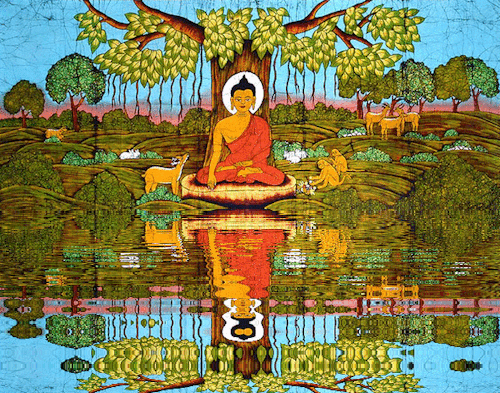
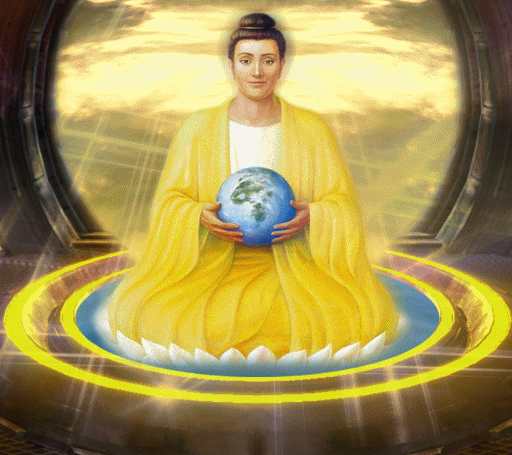
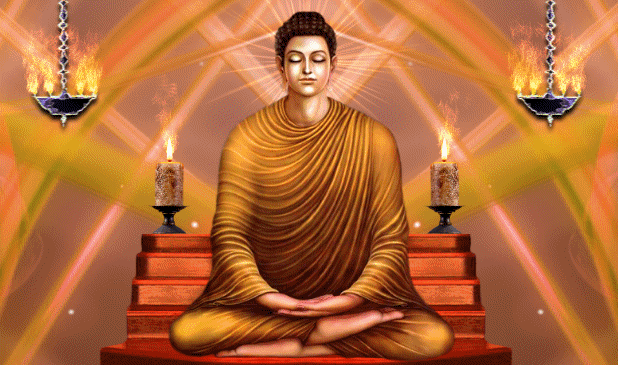

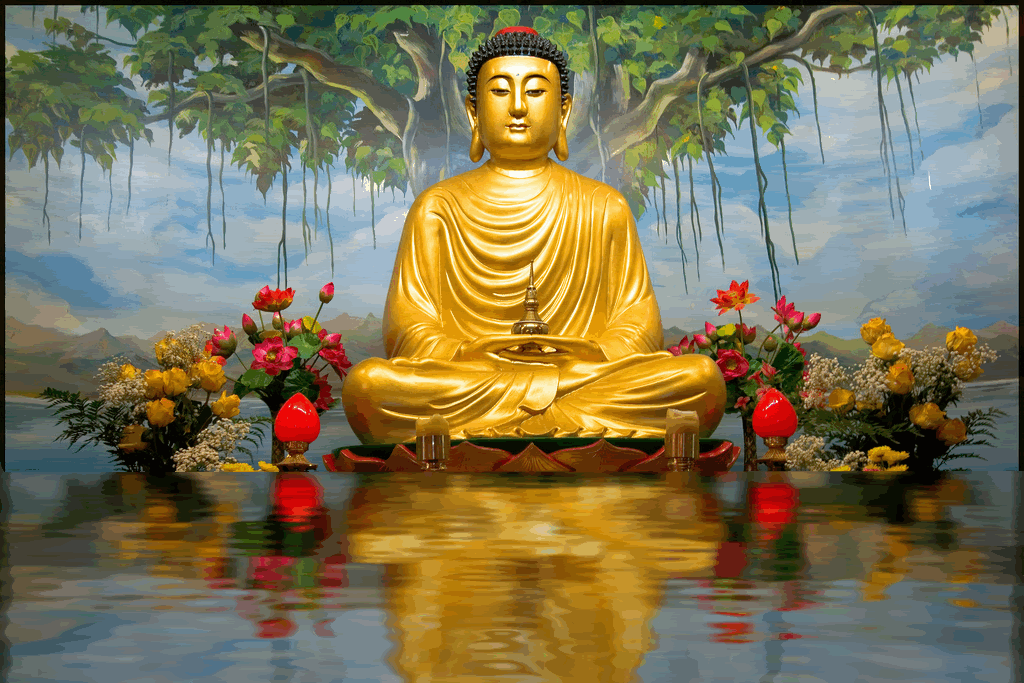









so many other torches which people may bring along; and therewith they
will cook food and dispel darkness, while the original torch itself
remains burning ever the same. It is even so with the bliss of the Way.
[Sutra of 42 Sections]”
than the man who would conquer
a thousand-thousand men,
is he who would conquer
just one —
himself.
Better to conquer yourself
than others.
When you’ve trained yourself,
living in constant self-control,
neither a deva nor gandhabba,
nor a Mara banded with Brahmas,
could turn that triumph
back into defeat.” 22) “Conquer the angry one by not getting angry; conquer the wicked by
goodness; conquer the stingy by generosity, and the liar by speaking
the truth.
beast; a wild beast may wound your body, but an evil friend will wound
your mind.”
goodness; conquer the stingy by generosity, and the liar by speaking
the truth.
[Verse 223]”
Long life is welcome, agreeable, pleasant, & hard to obtain in the world.
Beauty is welcome, agreeable, pleasant, & hard to obtain in the world.
Happiness is welcome, agreeable, pleasant, & hard to obtain in the world.
Status is welcome, agreeable, pleasant, & hard to obtain in the world.
…Now,
I tell you, these… things are not to be obtained by reason of prayers
or wishes. If they were to be obtained by reason of prayers or wishes,
who here would lack them? It’s not fitting for the disciple of the noble
ones who desires long life to pray for it or to delight in doing so.
Instead, the disciple of the noble ones who desires long life should
follow the path of practice leading to long life. In so doing, he will
attain long life…
[Ittha Sutta, AN 5.43]”
27) “Words do not express thoughts very well; every thing immediately
becomes a little different, a little distorted, a little foolish. And
yet it also pleases me and seems right that what is of value and wisdom
of one man seems nonsense to another.”
Live purely. Be quiet.
Do your work with mastery.
Like the moon, come out
from behind the clouds!
Shine”
29) “Nothing can harm you as much as your own thoughts unguarded.”

24) “If you do not change direction, you may end up where you are heading”
https://wisdomfromworldreligions.com/home1/utm_medium/paid_social/utm_source/google_adwords/utm_campaign/wfwr2/utm_content/int_hdytlm_bm
https://wisdomfromworldreligions.com/
from World Religions is a 6-week, 100% free online course open to
anyone, everywhere. With one of the world’s leading professors as your
guide, you’ll study spiritual wisdom from around the globe.
inspiring answers to many of life’s big questions:
• What clues do science and the world’s religions give about the meaning
and purpose of life?
• Is science the ultimate guide to the deepest truth of life?
• Why do the many world religions offer such different pictures of the
meaning of life?
• What practices can bring God, or a divine reality, into your own
experience?
• Is death the end of life?
Sign up by August 12 to begin this spiritual journey.
Welcome to Wisdom from World Religions. You’ll be contacted via your registered email shortly before your session begins.
Thank you for joining us on this journey.


